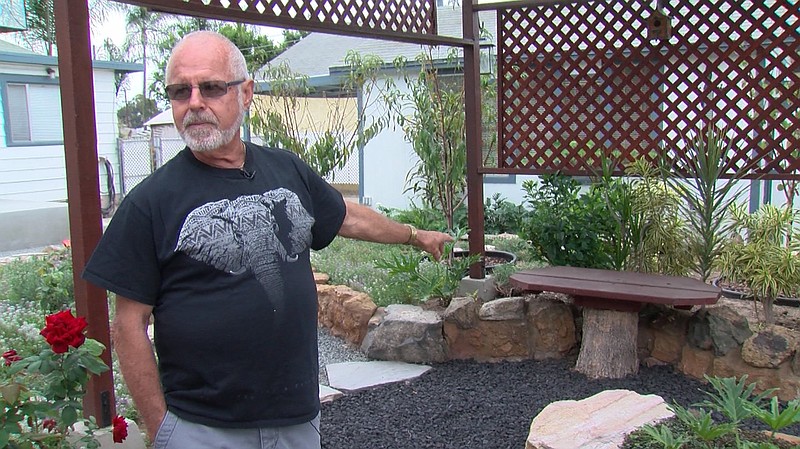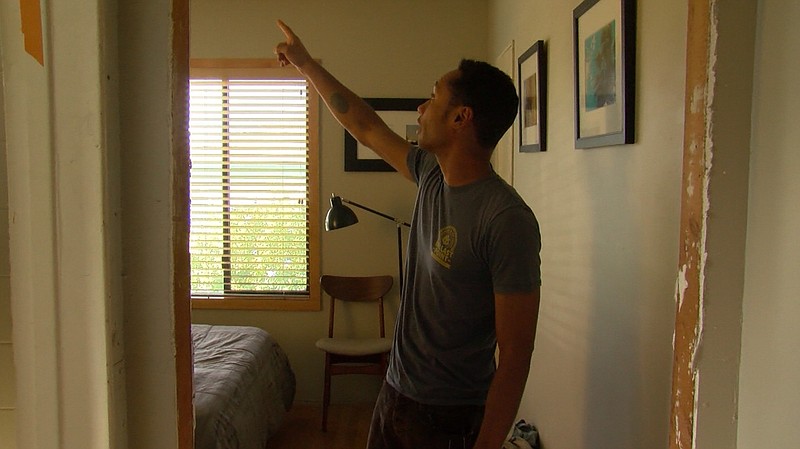The backyard of Tracy King’s rental property in City Heights is what he calls an urban farm. The two-bedroom craftsman features a vegetable garden, fruit trees, a chicken coop and scores of flowers, from roses to milkweed. The latter helps form “butterfly alley,” where monarchs feed and breed before migrating south, he said.
King has rented the house out for two decades, partly as an investment for his children. He has lived in the home next door since the late ‘60s. Now, as the neighboring urban farm maintenance grows burdensome and his grown daughter said she is financially stable, he is selling.
He accepted a young couple’s offer that came at above asking price — and higher than the area’s median home value — the first day the property hit the market. The deal moved so quickly, the listing real estate broker had to cancel a planned open house.
“It’s retirement income,” King said. “All of a sudden you know, we have this money, pay off any debts we have, be debt free, and be able to travel, so it’s basically (an) end-of-life idea.”
The sale reflects a trend hitting the City Heights community. Home prices in the neighborhood are expected to appreciate at the second-highest rate in San Diego County over the next year, according to Zillow. The online real estate website predicts values in the 92105 zip code will increase 3.9 percent, a rate tied with Clairemont and second to the Imperial Beach region. Homes in that community are expected to appreciate 6.5 percent.

Zillow Senior Economist Aaron Terrazas said neighborhoods that have been plagued by high rates of poverty and low-performing schools, such as City Heights, are gaining popularity with buyers of higher means.
“This area has been appreciating quickly and will probably continue to lead the San Diego metro over the next year,” Terrazas said.
City Heights resident Paul Smith said he has watched the changes to the neighborhood over the last four years. He posts photos of home and building renovations to his Facebook page, Transforming City Heights.
“When I first started driving around and I first started the page, there was a house here and a house there,” he said. “And now, it’s insane.”
Smith, a trauma nurse who owns a home and rents out another in the community, said he cannot keep pace with the changes occurring, which he follows through real estate sites and neighborhood drives that sometimes help put his two young daughters to sleep.
“There’s just too many projects. There’s houses being done everywhere,” he said, noting he sees many are selling quickly and at high prices.
He said his first home, which he renovated and now leases out, cost him $295,000 four years ago. He bought a new house, which he is also fixing up, six months ago that he said cost $450,000. Now a pending sale for a similar house down the street is at $495,000, he said. The area’s median home value is $408,000, according to Zillow.

Smith said much of what he documents, including new business openings, neighborhood cleanups and beautification efforts, has garnered a positive reaction, especially from homeowners. Although, others have decried some of the changes as gentrification, when affluent populations move in and displace poorer residents.
But Smith said he feels he is contributing to the neighborhood because the home he fixed up — doing much of the work on his own, he said — was in bad shape.
“When we took out the main sewer line, which most of these houses down here have cast iron pipes, it was rotten in the ground,” he said. “I had back ups with the plumbing when I first bought the house within a few months. The toilets would overflow. That was a nice mess.”
Terrazas, the economist from Zillow, said he does wonder how the market is affecting the lower-income 92105 zip code, where the U.S. Census Bureau estimates more than 70 percent of residents are renters.
“How are they adapting? What are the strategies? Are they moving in or sharing expenses with family members? Are they considering moving away?” he said.
At the urban farm, King said he plans to lock the gate that joins his two properties as soon as the deal closes on his former rental unit. He said it may be difficult to watch the new homeowners care for the sanctuary he created in the backyard, but he is excited for their future.
“It’s almost like I’ve been preparing it for someone else to take it — and this is the buyer’s first home, and she and her husband are going to be starting a family here,” he said.
King said when he and his wife first moved into the home he lives in and owns next door, they also had plans to start a family. An elderly couple first rented them the place for $85 a month.

